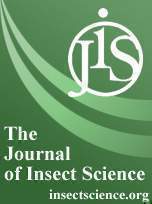The wheat midge, Sitodiplosis mosellana (Géhin) (Diptera: Cecidomyiidae), is one of the most serious pests of wheat worldwide. It overwinters as cocooned larvae in diapause and non-diapause forms. The cocoon is made of silk from the salivary glands. The silk glands, therefore, play an important role in the S. mosellana diapause. In the present study, the ultra-structures of the silk glands between diapause and non-diapause larvae were examined by electro and light-microscopically. The silk glands consist of 156 cells organized like moniliform particles. Although silk gland cells of both diapause and non-diapause larvae contain developed organelles, including the endoplasmic reticulum, dictyosome, mitochondria, and lipid droplet, the organelles in non-diapause larvae are more developed than those in diapause larvae. These morphological characteristics of the silk glands in the diapause and non-diapause larvae can be used to distinguish the diapause status of the larvae.
How to translate text using browser tools
1 July 2012
Comparison of Silk Glands of Diapause and Non-Diapause Larval Sitodiplosis mosellana
Yiping Li,
Junxiang Wu,
Weining Cheng,
Weiwu Song,
Xiangqun Yuan

Journal of Insect Science
Vol. 12 • No. 81
July 2012
Vol. 12 • No. 81
July 2012
orange wheat blossom midge
salivary gland
ultrastructure




